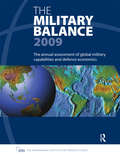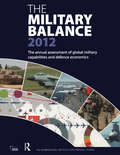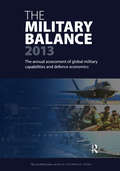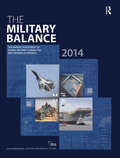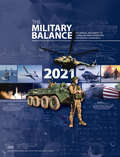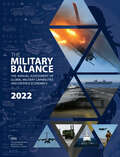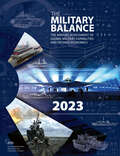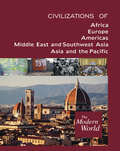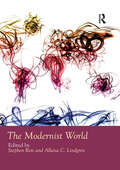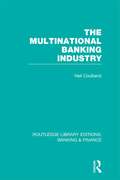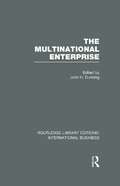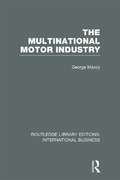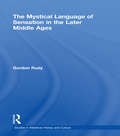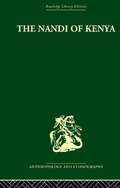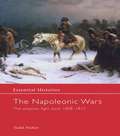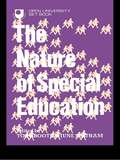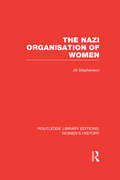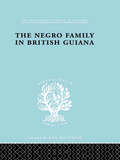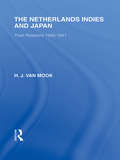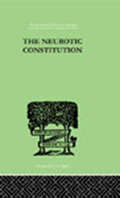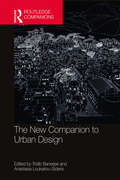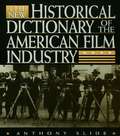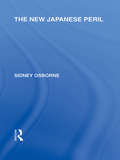- Table View
- List View
The Military Balance 2009 (The Military Balance)
by James Hackett Dr John ChipmanThe Military Balance is The International Institute for Strategic Studies annual assessment of the military capabilities and defence economics of 170 countries worldwide. It is an essential resource for those involved in security policymaking, analysis and research. The book is a region-by-region analysis of the major military and economic developments affecting defence and security policies, and the trade in weapons and other military equipment. Comprehensive tables detail major military training activities, UN and non-UN deployments, and give data on key equipment holdings and defence-expenditure trends over a ten year period. Key Features: Region-by-region analysis: major military issues affecting each region, changes in defence economics, weapons and other military equipment holdings and the trade in weapons and military equipment Comprehensive tables: key data on weapons and defence economics, such as comparisons of international defence expenditure and military manpower Analysis: significant military and economic developments Wallchart: detailed world map that shows current areas of conflict, with explanatory tables. This new edition of The Military Balance provides a unique compilation of data and information enabling the reader to access all required information from one single publication.
The Military Balance 2012
by The International Institute for Strategic Studies (IISS)The Military Balance is the International Institute for Strategic Studies annual assessment of the military capabilities and defense economics of 170 countries worldwide. It is a useful resource for those involved in security policy making, analysis and research.The book is a region-by-region analysis of the major military and economic developments.
The Military Balance 2013
by The International Institute for Strategic Studies (IISS)The Military Balance 2013 is the annual assessment of the military capabilities and defence economics of 171 countries world-wide. New features of the 2013 edition include; reorganised and expanded analytical essays. New sections on trends in contemporary armed conflicts in Afghanistan and Syria, as well as trends in defence capability areas, with a focus on equipment, technological or doctrinal developments. There is also an essay on trends in defence economics and procurement, one on European defence industries, and another on anti-access/area denial, detailed analysis of regional and national defence policy and economic issues for selected states, updated graphics feature on comparative defence statistics, with focus on defence economics, and major land, sea and, air capability concerns, tables, graphics and analysis of defence economics issues, additional national capability summaries, additional data on, land forces: combat support and combat service support, new graphics and maps on defence capability issues and additional data on cyber capabilities.
The Military Balance 2014 (The\military Balance Ser.)
by The International Institute for Strategic Studies (IISS)The Military Balance 2014 contains region-by-region analysis of the major military and economic developments affecting defence and security policies and the trade in weapons and other military equipment. Detailed entries describe the military capabilities of 171 countries, displaying key equipment inventories and defence economics. Comprehensive tables detail major training activities, UN and non-UN deployments, and international comparisons of defence expenditure and military personnel.
The Military Balance 2021 (The Military Balance)
by The International Institute for Strategic Studies (IISS)Published each year since 1959, The Military Balance is an indispensable reference to the capabilities of armed forces across the globe. It will be of interest to anyone interested in security and military issues and is regularly consulted by academia, media, armed forces, the private sector and government. Key Elements: 1. Data on the military organisations, equipment inventories and defence budgets of 171 countries 2. Analysis of major developments affecting defence policy and procurement, and defence economics, arranged region-by-region. 3. Key trends in the land, sea and air domains, and in cyberspace 4. Selected defence procurement programmes, arranged region-by-region 5. Full-colour graphics including maps and illustrations 6. Extensive explanatory notes and references 7. The hardcopy edition is accompanied by a full-colour wall chart Features in the 2021 edition include: - Analytical texts on future maritime competition, battle management systems, China’s civil-military integration and fractures in the arms-control environment - Military cyber capabilities - Analysis of developments in defence policy, military capability and defence economics and industry for China, Egypt, Finland, Indonesia, Russia, Senegal and the United States. - A wallchart illustrating global submarine holdings and key trends in subsurface warfare
The Military Balance 2022 (The Military Balance)
by The International for Strategic Studies (IISS)Published each year since 1959, The Military Balance is an indispensable reference to the capabilities of armed forces across the globe. It is used by academia, the media, armed forces, the private sector and government. It is an open-source assessment of the military forces and equipment inventories of 171 countries, with accompanying defence economics and procurement data. Alongside detailed country data, The Military Balance assesses important defence issues, by region, as well as key global trends, such as in defence technology and equipment modernisation. This analysis is accompanied by full-colour graphics, including maps and illustrations. With extensive explanatory notes and reference information, The Military Balance is as straightforward to use as it is extensive. The 2022 edition is accompanied by a fullcolour wall chart illustrating security dynamics in the Arctic.
The Military Balance 2023 (The Military Balance)
by The International for Strategic Studies (IISS)The Military Balance has been published annually since 1959. The 2023 edition provides an open-source assessment of the armed forces and equipment inventories of 173 countries, with accompanying defence economics data. Alongside detailed country data, The Military Balance assesses important military issues, region-by-region, and includes graphics to illustrate these as well as noteworthy equipment developments. Maps this year include a focus on Russia’s full-scale invasion of Ukraine and select China-Russia military cooperation activities. The book draws on the range of data carried in the Military Balance+ online database, particularly the procurement features in each regional section. The accompanying wallchart explores the military use of outer space, an increasingly important element of defence capabilities, focusing on China, Russia and the United States. For those involved in defence and security policymaking, analysis and research, The Military Balance is an indispensable source.
The Mirror: A History
by Sabine Melchoir-BonnetThis engaging and witty cultural history traces the evolution of the mirror from antiquity to the present day, illustrating its journey from wondrous object to ordinary trinket. With its earliest invention, the mirror allowed us to gaze upon ourselves, bestowing a power both fascinating and terrifying.
The Modern World: Civilizations of Africa, Civilizations of Europe, Civilizations of the Americas, Civilizations of the Middle East and Southwest Asia, Civilizations of Asia and the Pacific
by Sarolta Tak Mounir FarahDesigned to meet the curriculum needs for students from grades 7 to 12, this five-volume encyclopedia explores world history from approximately 5000 C.E. to the present. Organized alphabetically within geographical volumes on Africa, Europe, the Americas, the Middle East and Southwest Asia, and Asia and the Pacific, entries cover the social, political, scientific and technological, economic, and cultural events and developments that shaped the modern world.Each volume includes articles on history, government, and warfare; the development of ideas and the growth of art and architecture; religion and philosophy; music; science and technology; and daily life in the civilizations covered. Boxed features include "Turning Point," "Great Lives," "Into the Twenty-First Century," and "Modern Weapons". Maps, timelines, and illustrations illuminate the text, and a glossary, a selected bibliography, and an index in each volume round out the set.
The Modernist World (Routledge Worlds)
by Allana Lindgren Stephen RossThe Modernist World is an accessible yet cutting edge volume which redraws the boundaries and connections among interdisciplinary and transnational modernisms. The 61 new essays address literature, visual arts, theatre, dance, architecture, music, film, and intellectual currents. The book also examines modernist histories and practices around the globe, including East and Southeast Asia, South Asia, Sub-Saharan Africa, Australia and Oceania, Europe, Latin America, the Middle East and the Arab World, as well as the United States and Canada. A detailed introduction provides an overview of the scholarly terrain, and highlights different themes and concerns that emerge in the volume. The Modernist World is essential reading for those new to the subject as well as more advanced scholars in the area – offering clear introductions alongside new and refreshing insights.
The Multinational Banking Industry (Routledge Library Editions: Banking & Finance)
by Neil S CoulbeckThe role of international banks within the developed economies has come under increasingly hostile public scrutiny, yet little attention has been paid to the structure and purpose of the banks themselves. Most existing studies concentrate on the part played by international banks as intermediaries in the domestic and international economy, failing to consider the foremost concern of the banks themselves – their success as business enterprises. This book examines the practical problems faced by the Universal Multinational banks (UMNBs) in the fields of strategic planning and business development. It explains the common constraints encountered by the UMNBs, showing that, whether they like it or not, current market pressures are governing their policies in all the developed economies. Through studying the management structures and business policies of these banks this book provides a much clearer picture of their activities in the world economy. Initially, it concentrates on the UMNBs of the USA since they have provided a strategic model for other global banking concerns. The UMNBs of Japan, Britain, France, Germany, Canada and Switzerland are then discussed to establish their similarities and differences: case studies are included at the end of each chapter to illustrate and reinforce the points made in the preceding text. Although written in 1984 the author successfully predicted many of the subsequent developments in the field of information technology and competition in world markets, which led to the emergence of global financial enterprises.
The Multinational Enterprise: International Business: International Production And The Multinational Enterprise (rle International Business) (Routledge Library Editions: International Business)
by John H. DunningThe book focuses on the major environmental implications stemming from the growth of the multinational enterprise in a multiple currency world; the international transfer of technology; industrial relations and labour utilization in foreign-owned firms in the UK; multinational companies and trade union interests; foreign direct investment, the balance of payments and trade flows; the multinational enterprise and developing countries; government policy alternatives and the problem of international sharing and a case study of a multinational enterprise in Europe. A survey of the background to the multinational enterprise and concluding summaries ensure that this book is one of the most widely embracing volumes available on the subject.
The Multinational Motor Industry (Routledge Library Editions: International Business)
by George MaxcyThis book analyses the multinational enterprise using the example of the world motor industry. It begins by examining the multinational enterprise in general, considering its nature, the economic theory of its behaviour and is effects on the nation state. It goes on to explore the growth and development of the multinational motor industry, and then surveys the state of the motor industry, and the role of multinationals in it, in various types of economy, using case studies from the UK, USA, Canada, Australia, Brazil and India.
The Mystical Language of Sensation in the Later Middle Ages (Studies in Medieval History and Culture #14)
by Gordon RudyFirst Published in 2002. This book is about the way medieval authors wrote about union with God and how they used language that refers to the senses to articulate their ideas about how a person can be one with God. Rudy argues that such explicit concepts of the spiritual senses are not sharply distinct from the ideas implicit in broader usage of sensory language in theological writings. These ideas are significant in the history of Christian mysticism, because language that refers to the senses bears directly on several ideas that are central to ideas about union with God.
The Nandi of Kenya
by G. W. HuntingfordThis book examines the political structure of the Nandi tribe in the first half of the twentieth century and contains chapters on the following: · Land divisions and local authorities · Age-sets · War organisation · Administrative changes · Law · Religion. First published in 1953
The Napoleonic Wars: The Empires Fight Back 1808-1812 (Essential Histories #Vol. 4)
by Todd FisherFirst Published in 2002. Routledge is an imprint of Taylor & Francis, an informa company.
The Nature of Special Education: People, Places And Change (Open University Set Book Ser.)
by Tony Booth & June StathamFirst published in 1981. Routledge is an imprint of Taylor & Francis, an informa company.
The Nazi Organisation of Women (Routledge Library Editions: Women's History)
by Jill StephensonThe Nazi’s were implacably opposed to feminism and women’s independence. Rosa Luxemburg became a symbol of all that most horrified them in German society, in particular because of her involvement in active politics. Nazi ideology saw women in the activist role of 'wives, mothers and home-makers', and their task was to support their fighting menfolk by providing food and making and mending uniforms and flags. The miscellany of women’s organisations was dissolved and reunified by Gregor Strasser in 1931, and in 1934 Gertrud Scholtz-Klink became an overall leader of the Nazi Women’s Group, after which it functioned primarily as a propaganda channel. Part of the policy of Gleichschaltung (co-ordination) meant that even to join a sewing group, women had to choose the party group or nothing. This book provides a detailed and fascinating picture of the origins, development and functions of the specifically women’s organisations associated with the NSDAP from their beginnings in the early 1920s, until their demise in 1945. It traces the history of the Nazi Women’s Group, the sources of its members and analyses their ambitions and hopes from the Frauenwerk. Its purpose is above all to make an important contribution to the study of National Socialism as a movement which attracted and held the enthusiasm of a small minority of Germans who, given the chance from 1933, attempted to impose their will on the majority.
The Negro Family in British Guiana: Family Structure and Social Status in the Villages (International Library of Sociology #Vol. 66)
by Raymond T. SmithThis is Volume IX of eighteen in a collection on the Sociology of Development. Originally published in 1956 and using language of the time, this monologue looks at the family system in Guianese families.
The Netherlands, Indies and Japan: Their Relations 1940-1941 (Routledge Library Editions: Japan)
by H J van MookThis volume chronicles the facts concerning the relations between the Netherlands in Asia and Japan during the last two years before the outbreak of war in the Pacific and concentrates on political and economic affairs.
The Neurotic Constitution: OUTLINES OF A COMPARATIVE INDIVIDUALISTIC PSYCHOLOGY and (Select Bibliographies Reprint Ser.)
by Adler, AlfredFirst Published in 1999. Routledge is an imprint of Taylor & Francis, an informa company.
The New Companion to Urban Design
by Tridib Banerjee Anastasia Loukaitou-SiderisThe New Companion to Urban Design continues the assemblage of rich and critical ideas about urban form and design that began with the Companion to Urban Design (Routledge, 2011). With chapters from a new set of contributors, this sequel offers a more comparative perspective representing multiple voices and perspectives from the Global South. The essays in this volume are organized in three parts: Part I: Comparative Urbanism; Part II: Challenges; and Part III: Opportunities. Each part contains distinct sections designed to address specific themes, and includes a list of annotated suggested further readings at the end of each chapter. Part I: Comparative Urbanism examines different variants of urbanism in the Global North and the Global South, produced by a new economic order characterized by the mobility of labor, capital, information, and technology. Part II: Challenges discusses some of the contemporary challenges that cities of the Global North and the Global South are facing and the possible role of urban design. This part discusses spatial claims and conflicts, challenges generated by urban informality, explosive growth or dramatic shrinkage of the urban settlement, gentrification and displacement, and mimesis, simulacra and lack of authenticity. Part III: Aspirations discusses some normative goals that urban design interventions aspire to bring about in cities of the Global North and the Global South. These include resilience and sustainability, health, conservation/restoration, justice, intelligence, access and mobility, and arts and culture. The New Companion to Urban Design is primarily intended for scholars and graduate students interested in cities and their built environment. It offers an invaluable and up-to-date guide to current thinking across a range of disciplines including urban design, planning, urban studies, and geography.
The New Historical Dictionary of the American Film Industry
by Anthony SlideThe New Historical Dictionary of the American Film Industry is a completely revised and updated edition of Anthony Slide's The American Film Industry, originally published in 1986 and recipient of the American Library Association's Outstanding Reference Book award for that year. More than 200 new entries have been added, and all original entries have been updated; each entry is followed by a short bibliography. As its predecessor, the new dictionary is unique in that it is not a who's who of the industry, but rather a what's what: a dictionary of producing and releasing companies, technical innovations, industry terms, studios, genres, color systems, institutions and organizations, etc. More than 800 entries include everything from "Academy of Motion Pictures Arts and Sciences" to "Zoom Lens", from "Astoria Studios" to "Zoetrope". Outstanding Reference Source - American Library Association
The New Japanese Peril (Routledge Library Editions: Japan)
by Sidney OsborneThis volume examines the issues surrounding the renewal of the Anglo-Japanese Treaty of Alliance and looks at the possible consequences of different courses of action, against a backdrop of a Far Eastern situation under constant change. In spite of claims of impartiality, this volume represents widely-held views of the day that "the future supremacy of the white races is endangered" and the author claims to have remained as objective as possible, despite "being a member of the Western family of nations against whom the new Japanese peril may come to be directed."
The New Psychology of Leadership: Identity, Influence and Power
by S. Alexander Haslam Michael J. Platow Stephen D. ReicherWinner of the University of San Diego Outstanding Leadership Book Award 2012! Shortlisted for the British Psychological Society Book Award 2011! Shortlisted for the CMI (Chartered Management Institute) Management Book of the Year Award 2011–2012! According to John Adair, the most important word in the leader's vocabulary is "we" and the least important word is "I". But if this is true, it raises one important question: why do psychological analyses of leadership always focus on the leader as an individual – as the great "I"? One answer is that theorists and practitioners have never properly understood the psychology of "we-ness". This book fills this gap by presenting a new psychology of leadership that is the result of two decades of research inspired by social identity and self-categorization theories. The book argues that to succeed, leaders need to create, champion, and embed a group identity in order to cultivate an understanding of 'us' of which they themselves are representative. It also shows how, by doing this, they can make a material difference to the groups, organizations, and societies that they lead. ? Written in an accessible and engaging style, the book examines a range of central theoretical and practical issues, including the nature of group identity, the basis of authority and legitimacy, the dynamics of justice and fairness, the determinants of followership and charisma, and the practice and politics of leadership. The book will appeal to academics, practitioners and students in social and organizational psychology, sociology, political science and anyone interested in leadership, influence and power.
